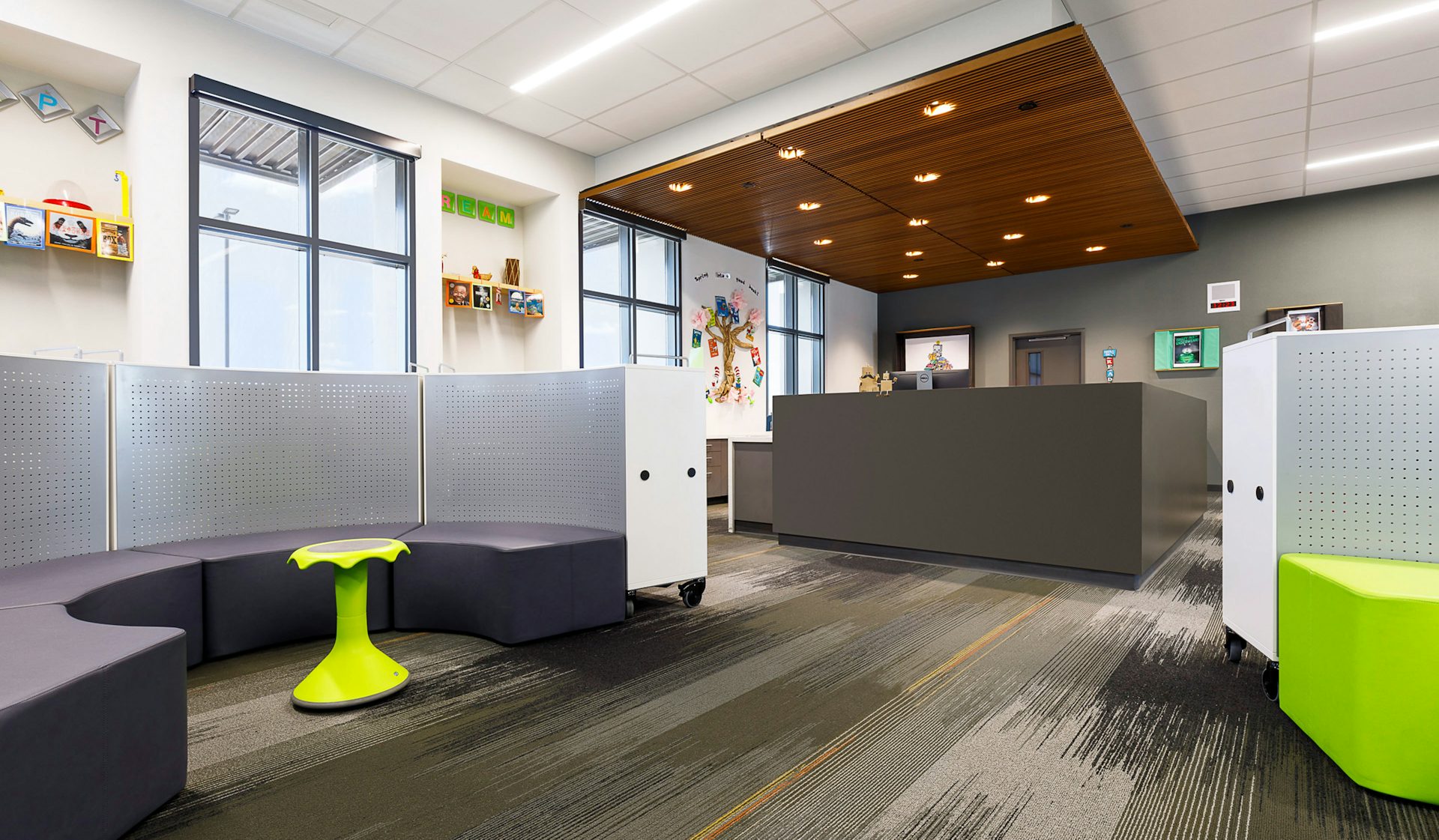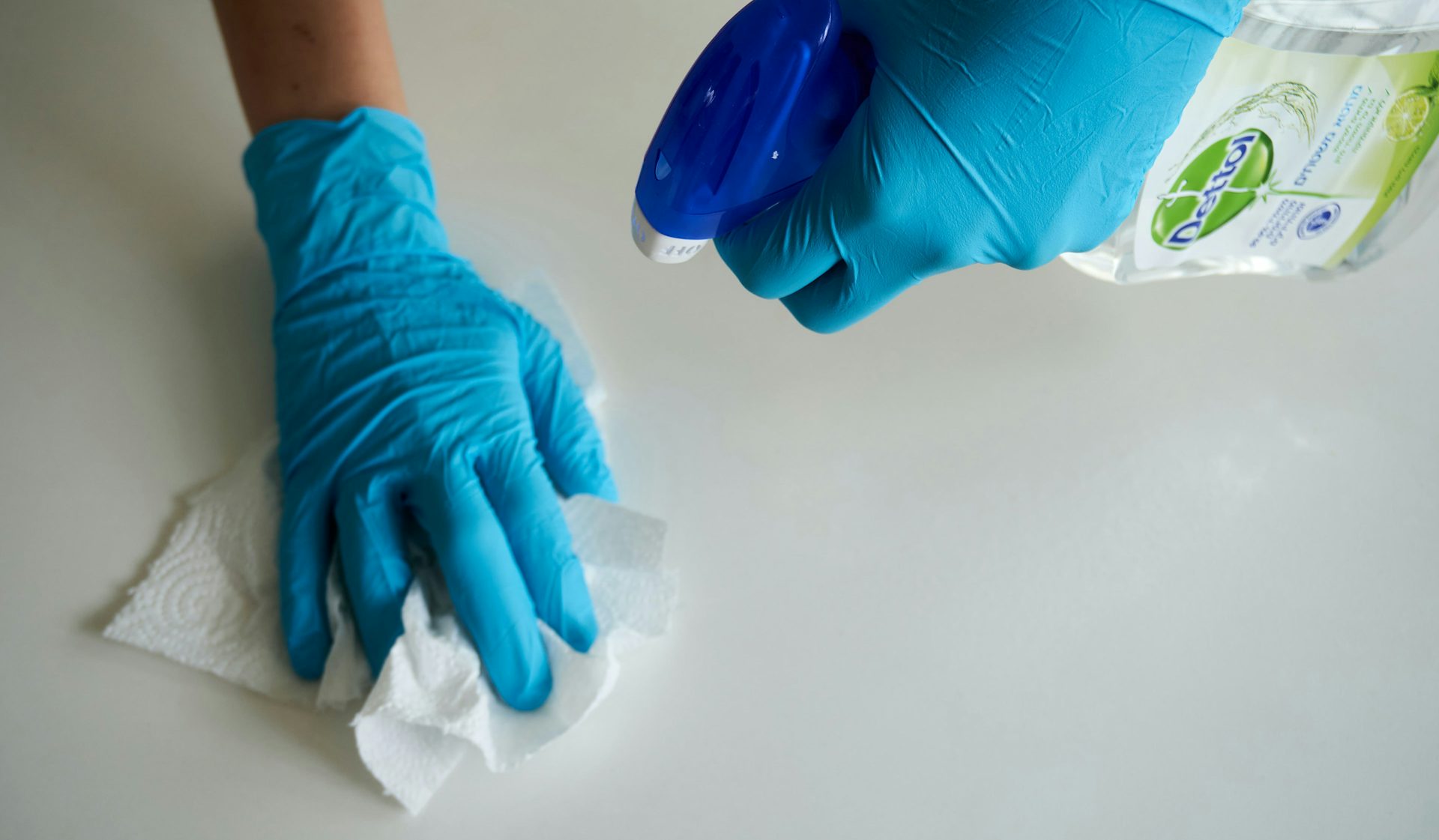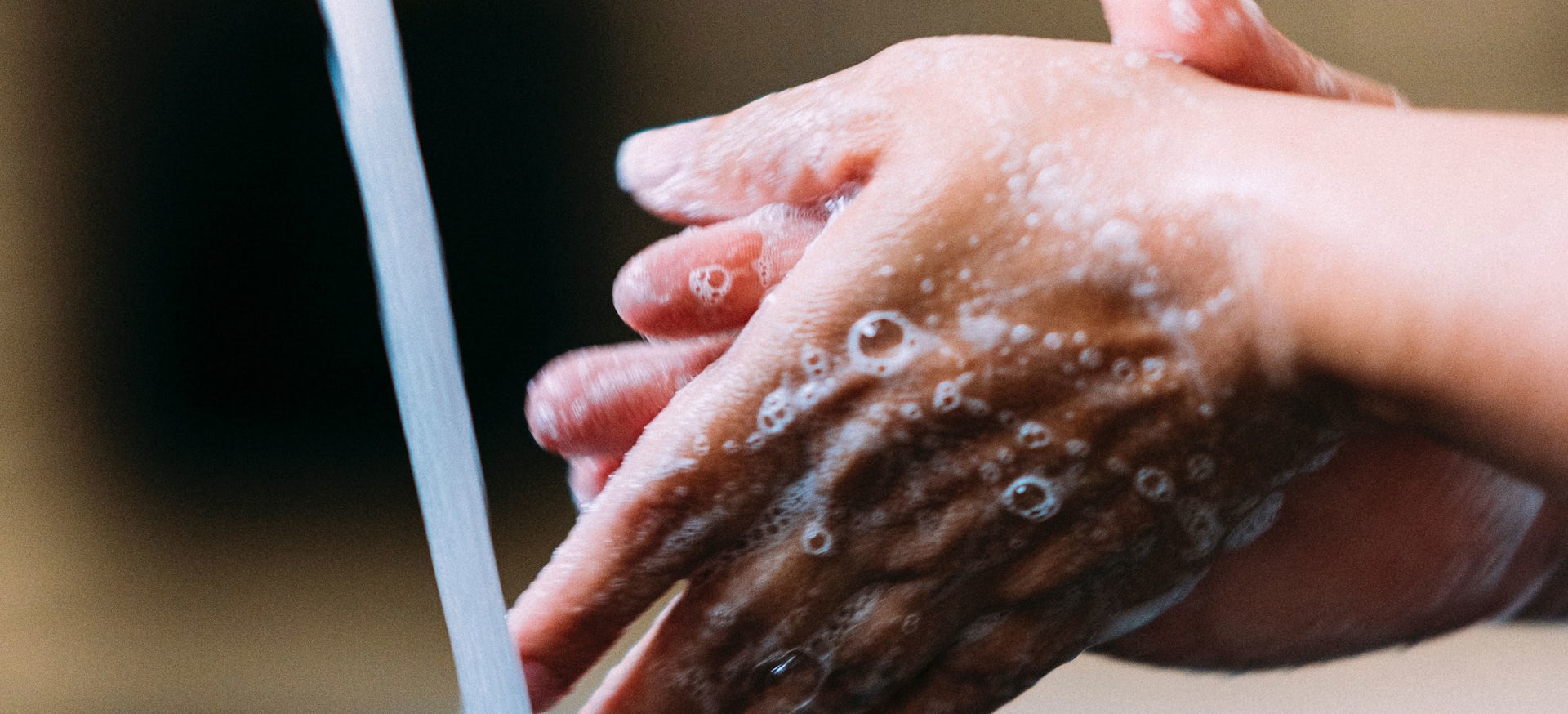Amid the COVID-19 pandemic, people are searching for both temporary solutions and long-term prevention strategies to minimize the transmission of viruses, bacteria and fungi. The information gathered below stems from a commissioned literature review in 2020 of research primarily in healthcare environments in response to inquiries about the effectiveness of antimicrobials in hospital settings. While emerging materials/product research is often overstating the benefits of antimicrobial materials, at this point in time, research has not yet confidently demonstrated that antimicrobials can prevent the spread of infection beyond the traditional practices of hand washing and a regimented cleaning protocol, which can be achieved at a lower cost. A large body of research from reputable sources supports a comprehensive approach that integrates behavioral, environmental and operational strategies as the most effective solution for infection prevention.
Behavioral, Environmental & Operational Strategies for Reducing Infection Transfer

Hand Hygiene Behavior & Training
Traditional soap and water hand hygiene is recommended as the most effective method to break the chain of infection transmission, which is most often spread through touch – however, hand washing is frequently not done in all instances when it is required or for the recommended amount of time. Factors contributing to people’s disregard for proper hand hygiene include a lack of time, available and convenient resources (e.g., hand hygiene sinks and gel dispensers), awareness regarding health risks and benefits, and forgetfulness. A combination of behavioral, environmental, and organizational strategies to promote and reinforce handwashing behaviors is more effective than any single method.



Facility Design, Materials, Systems & Technology Strategies
Consider ways to mitigate the surface, air and water sources of infection transmission through facility design, selection of materials and maintenance and operations of HVAC and plumbing systems.

Support and Reinforce Physical Distancing in Shared Spaces
Use spatial organization and physical barriers, like easily movable furniture, plants and other screen/separation options to reinforce physical distancing in shared spaces. Glass, acrylic and other smooth non-porous materials are recommended for sneeze guards and other spatial separation needs.
Specify Easy-to-Clean, Durable Materials and Finishes
Specify materials and finishes that are easy to clean and durable to withstand frequent and intense cleaning, especially for high-touch surfaces.
Flooring and furniture selection strategies to reduce risk of contamination include:
- Smooth surfaces, including minimum surface joints, seams, perforations and crevices.
- Minimum ridges, reveals or horizontal surfaces that could collect dust
- Upholstery that is spill-resistant, stain-resistant and free of Perfluoroctanoic Acid (PFOA)
- Coved right angles between wall and floor
- Carpet designed to prevent liquids from penetrating the backing layer, and resilient flooring that can be easily cleaned and maintained with low-VOC cleaners and finishes
- Wall finishes that can repel moisture and be cleaned easily, because the risk of infection transmission from walls and floors is minimal unless there is residual moisture on the surface
Health Product Declarations (HPDs) are the go-to resource for accurate, reliable, standardized disclosure of product contents and associated health information for building materials (hpd-collaborative.org).
Minimize or Avoid the Use of Antimicrobials
Antimicrobials are added to thousands of building materials to preserve the material and protect it from microbes – not to protect human health or the spread of infection. Many antimicrobials are hazardous to humans and the environment and should be avoided, especially those claiming to promote health. Copper is an exception since it is inherently biocidal without toxicity. However, the EPA states that copper does not necessarily prevent cross-contamination from one object or person to another.
Design applications include copper-infused textiles (e.g., mesh seating, clothing and personal protective equipment) as well as copper and copper-alloy hard surfaces (e.g., door handles, push plates, toilet seats, sink fixtures, chair arms and other high-touch surfaces).

Maintain Building Systems, Controls and Technology Infrastructure
SURFACES + TECHNOLOGY-ASSISTED CONTROLS
Facility operations are becoming increasingly touch-free as technology-assisted controls are available for previously high-touch surfaces and equipment (e.g., entry/exit, elevators, sinks, toilets, lighting and HVAC controls) and technology solutions can minimize the number of close-proximity interactions (e.g., electronic vs. paper forms for workplaces or schools, eSignature apps and electronic document submittal/approval, contactless payment, iPad/tablet learning materials).
Health Product Declarations (HPDs) are the go-to resources for accurate, reliable and standardized disclosure of product contents and associated health information for building materials.
AIR + HVAC
Reduce risk of airborne pathogen transmission with:
- Proper maintenance and operation of HVAC systems
- Increased ventilation and air filtration
See recommendations on EPA and CDC websites (epa.gov and cdc.gov), by building type, as well as LPA’s “HVAC Helpful Tips” resource.
WATER + PLUMBING
Minimize potential growth of pathogens and reduce the risk of waterborne pathogen transmission in new construction and renovation with:
- Safe plumbing practices
- Water source decontamination
- The use of design elements
- Proper maintenance
CLEANING PROTOCOLS + PRODUCTS
To minimize the risk of spreading novel viruses, the CDC states that the most effective method is regular cleaning and disinfection of frequently touched surfaces. The combination of regular cleaning, disinfecting and sanitizing is the best defense against pathogens and among the best practices for maintaining a healthy environment. It is advised to always follow the manufacturer’s instructions for the material and surfaces being cleaned, as well as the disinfectant being used. Not following manufacturers’ cleaning instructions or overcleaning a material can result in a decreased service life of the material as well as the growth of “superbugs,” which pose the serious threat of antibiotic resistance. Targeting high-touch surfaces, paired with cleaning performance feedback and operational support (e.g. continuous training, signage), amounts to improved cleanliness. Intervention programs such as assigning cleaning responsibilities, investing in education, and monitoring staff have also been shown to improve cleaning practices.

10 Steps to Clean and Disinfect Safely and Effectively
1. ALWAYS refer to the material specifications or “Washing Label” for cleaning instructions.
2. Pre-clean surfaces with soap and water to get rid of all impurities, otherwise pathogens can hide behind dirt and debris left behind.
3. Prior to the use of any chemicals, ensure the surface is thoroughly cleaned and has been dried.
4. Double check the toxicity of the cleaning product recommended based on the Environmental Protection Agency (EPA) registered list.
5. To ensure safe and effective use of the cleaning agent, refer to the cleaning product label.
6. Leave the cleaning agent for the recommended contact time - the required duration of time that the chemical product must remain on a surface prior to being wiped away, in order for the cleaning agent to be effective against germs.
7. In some cases, following the use of disinfectants, surfaces should be rinsed with clean water to protect the service life of the material as well as occupants from possible adverse effects of exposure to the cleaning agents.
8. Further important considerations are to not mix disinfectant products together (e.g. storing or combining bleach and ammonia results in a toxic chlorine gas) or apply the disinfectant to a wet area. If you are using wipes, make sure to not clean in a circular motion to avoid spreading germs around or missing areas – rather wipe from top to bottom, left to right.
9. Personal protective equipment worn during cleaning must be properly disposed of afterward.
10. Select materials that are easy to clean and durable to withstand frequent cleaning.
GLOSSARY
There is a common misconception about the terms – cleaning, disinfecting and sanitizing – and they should not be used interchangeably. For example, cleaning to eliminate a visual stain does not directly translate to disinfecting an area.
Cleaning
The physical removal of germs, dirt and impurities from surfaces, lowering the number of germs and decreasing the risk of spreading infections – it does not actually kill the germs.
Disinfecting
The use chemicals, registered on the EPA list, to directly kill germs that remain after the cleaning process. This process does not necessarily clean dirty surfaces or remove germs, but by killing germs on a surface after cleaning, it can further lower the risk of spreading infection.
Sanitation
A bit gentler than disinfecting and works by either cleaning or disinfecting to lessen the number of germs on a surface to a “safe level,” as determined by public health standards.
COMMON CHEMICALS
Soap and Water Cleans germs away rather than killing them but is still critical for reducing infection.
Bleach Effective against some of the most dangerous bacteria, as well as many viruses, but needs to be properly diluted.
Ethyl Alcohol (ethanol) Long-used antiseptic is effective against a long list of bacteria and a handful of viruses.
Ammonium Chloride Environmentally friendly but not registered by the EPA as a disinfectant. It is less effective against a wide range of bacteria.
Hydrogen Peroxide Has antimicrobial properties and is determined the safest for human health and the environment.
Quaternary Ammonium Compounds (QACs or “quats”) Kills most bacteria, viruses and fungi, but can be toxic to humans and the environment.
The most common disinfectant agents used in commercial interiors are diluted bleach (10:1 water/bleach solution) or alcohol (70% solution) – view the EPA’s List N for additional commercial cleaners and disinfectants.















